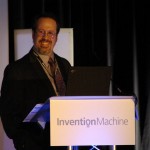Nov30
Innovation-Inspiring Prizes
Point: Use open innovation challenges and prizes to inspire solutions, participation and collaboration from employees, partners and customers
Story: In 1919, New York hotel owner Raymond Orteig offered a $25,000 reward to the first person who could fly nonstop from NYC to Paris. Although various people tried, no one won the prize until Charles Lindbergh in 1927. Orteig’s prize, in turn inspired the X PRIZE foundation to offer the Ansari X Prize: a $10 million award in 2004 to the first team from private industry to devise a spacecraft capable of carrying three people 100 kilometers above the earth twice within two weeks. The goal of the prize was to spur private investment and develop a commercial space industry.
Erika Wagner, executive director of the X PRIZE Lab at the Massachusetts Institute of Technology, spoke about how prizes like the X PRIZE are useful to embolden entrepreneurs to take big risks. And, the fact of the substantial prize means that funders and financiers take notice. Ultimately, 26 teams competed for the Ansari X PRIZE and in the six years since the prize was awarded, more than $1.5 billion dollars in public and private funding has gone to support the private spaceflight industry.
Companies from Toyota to Eli Lilly to SAP have run challenges and offered prizes as part of their open innovation efforts through partners like InnoCentive. SCA, for example, a large, international consumer products organization, achieved a return on investment of 74%, with a payback period of less than three months as a result of using InnoCentive Challenges for open innovation in a major R&D division of the organization.
Some of the benefits of prizes are:
• Increasing the number and diversity of the individuals, organizations, and teams that are addressing a particular problem
• Paying only for results
• Attracting more interest and attention to a defined program, activity, or issue of concern (1)
I’ll be sharing more insights about prizes and ideas from the Innovation3 Summit in Orlando Dec 8-10, 2010 in the next post. For now, here are some action strategies.
Action:
- Word your challenge precisely, around a well-defined problem, to get focused, on-target participation
- Think through all phases of the prize: how will you announce it? How will you determine the winner? How will you follow up to implement the idea?
- Be transparent throughout the process, explaining the criteria for selection of the winners, who will be selecting the winners, announcing and awarding the prize(s), etc.
- Acknowledge all participants, thanking them for their contributions and giving feedback to those who did not win, providing them with information that may help them in future challenges.
Comments Off on Innovation-Inspiring PrizesEntrepreneurs, Growth, How-to, Innovation, open innovation, Productivity, R&D










